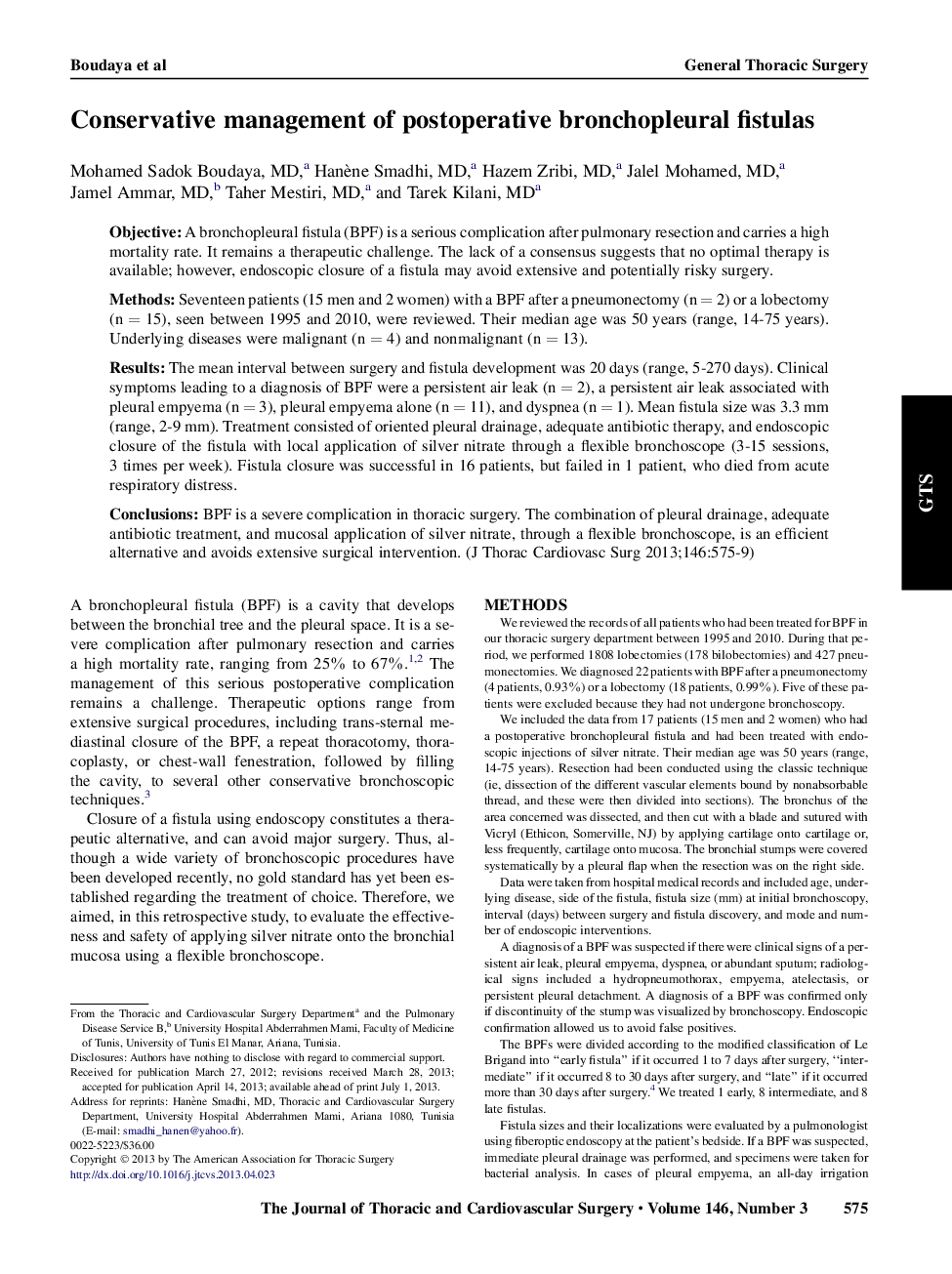| Article ID | Journal | Published Year | Pages | File Type |
|---|---|---|---|---|
| 5990121 | The Journal of Thoracic and Cardiovascular Surgery | 2013 | 5 Pages |
ObjectiveA bronchopleural fistula (BPF) is a serious complication after pulmonary resection and carries a high mortality rate. It remains a therapeutic challenge. The lack of a consensus suggests that no optimal therapy is available; however, endoscopic closure of a fistula may avoid extensive and potentially risky surgery.MethodsSeventeen patients (15 men and 2 women) with a BPF after a pneumonectomy (n = 2) or a lobectomy (n = 15), seen between 1995 and 2010, were reviewed. Their median age was 50 years (range, 14-75 years). Underlying diseases were malignant (n = 4) and nonmalignant (n = 13).ResultsThe mean interval between surgery and fistula development was 20 days (range, 5-270 days). Clinical symptoms leading to a diagnosis of BPF were a persistent air leak (n = 2), a persistent air leak associated with pleural empyema (n = 3), pleural empyema alone (n = 11), and dyspnea (n = 1). Mean fistula size was 3.3 mm (range, 2-9 mm). Treatment consisted of oriented pleural drainage, adequate antibiotic therapy, and endoscopic closure of the fistula with local application of silver nitrate through a flexible bronchoscope (3-15 sessions, 3 times per week). Fistula closure was successful in 16 patients, but failed in 1 patient, who died from acute respiratory distress.ConclusionsBPF is a severe complication in thoracic surgery. The combination of pleural drainage, adequate antibiotic treatment, and mucosal application of silver nitrate, through a flexible bronchoscope, is an efficient alternative and avoids extensive surgical intervention.
